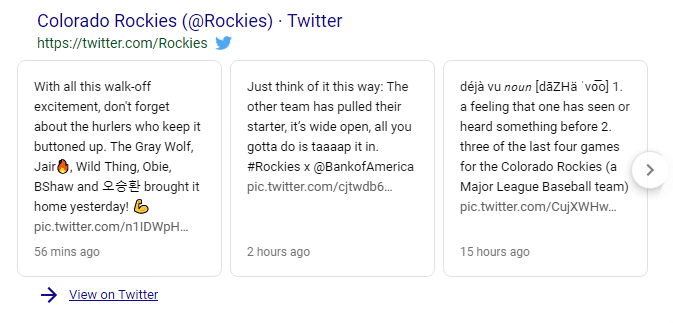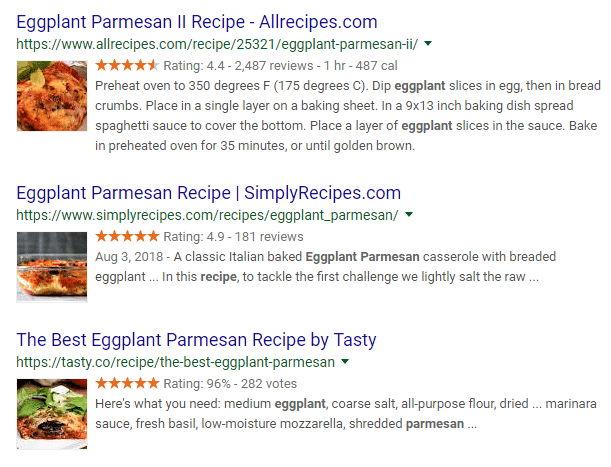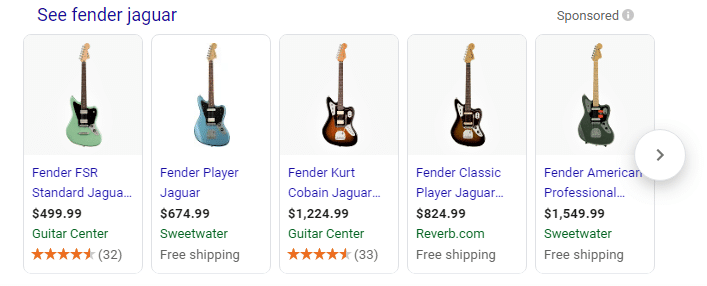The Evolution of Search
Organic search has witnessed a rapid evolution since the early days of the Internet. Google came to the party early and never left. Their revolutionary approach to ranking content (called PageRank) changed the game forever.
In the ensuing years, they managed to keep their foot on the gas, changing the way we discover and consume information in the process. With a dominant market share of nearly 90 percent, Google has been the driving force behind the evolution of search, organizing and presenting information in a remarkably sophisticated and efficient manner.
“Google it.”
That’s what people say when they want you to find something…literally anything. You know you’ve arrived when your noun becomes a verb.
Google is in the business of anticipating the answers to questions — no one does it better. Their revolution spawned several industries, including SEO. It is the job of SEO professionals to understand Google’s ranking factors so they can be better equipped to affect organic rankings.
The last several years have witnessed the rise of SERP features, which increasingly appear in lieu of traditional organic results. SERP features enable us to find answers to questions without ever clicking through to a website.
The aim of this article is to examine the different types of SERP features.
What is SERP?
For those not in the know, SERP is an acronym that stands for search engine results page. In layman’s terms, a search engine results page is what you see when you Google anything.
A SERP feature is any result that features non-traditional organic results. They are so common that most searchers couldn’t distinguish them from other organic results. Visually appealing and sitting on top of the heap, SERP features present information in dynamic formats that heighten user experience.
They’re quick, convenient, and throw a bit of shade on the future of search engine optimization. But if you’re an SEO professional, fear not. As long as there is content there will be ways to optimize it. Evolution is a continuum that doesn’t stop at any one individual’s moment of awareness.
Let’s dig into the different types of SERP features. For the most part, gaining any one of these SERP features is a matter of having a well-optimized site, strong keyword research, and Schema implementation.
Types of SERP Features
SERP features use different visual elements, formats, and features to display information about a particular query. The type of SERP feature that shows up largely depends on the type of query entered.
16 different types of SERP features
| Featured Snippets | Local Packs |
| Local Teaser Packs | Twitter Packs |
| Sitelinks | In-Depth Articles |
| News Boxes | Knowledge Panels |
| AdWords (Top & Bottom) | Reviews |
| Shopping Results | Image Packs |
| Videos | Knowledge Cards |
| Search Boxes | Related Questions |
Featured Snippets

Featured snippets are displayed in a box at the top of the SERP. They are pulled from 3rd party websites that adequately answer the user’s query and link to the related page. Featured snippets are prominently displayed at the top of the SERP — even before ranking #1. This is sometimes referred to as ranking #0, so it’s a pretty valuable snippet to get. Of all the SERP features, the featured snippet boasts the highest click-through-rate. To improve your chances of gaining a features snippet, looking into Schema markup.
Local Packs

In recent years, local search and geotargeting have gained momentum and the Local pack has become an indispensable resource. The Google algorithm is incredibly sophisticated and can easily detect searches with local intent. A query like “barbershop” will return a local pack. Local packs usually display three top results that can be opened up into more local results and map locations. Local search is one of the reasons Google recently moved to mobile-first indexing, as location-based queries are extremely popular on mobile devices — particularly voice-searches. To improve your shot at getting into Local Packs make sure you have a well-optimized Google My Business profile.
Local Teaser Packs

Local Teaser Packs are quite similar to the Local Pack. However, Local Teaser Packs tend to contain businesses in the restaurant and hotel industries. This “teaser” features more specific business information, such as hours, pricing, reviews, and images. It adds a layer of value by providing the searcher with more information to make a decision. Gaining this type of SERP feature is similar to the gaining a Local Pack feature: structured data markup and an optimized Google My Business profile.
Twitter Packs

The Twitter Pack is a great SERP feature that often appears down the page a bit (not quite halfway). This SERP feature displays most recent or trending tweets that are relevant to the user’s query. It goes without saying that to gain this SERP feature you have to actively Tweet. This feature is slightly one-dimensional, but it can be an effective way to raise brand awareness and occupy more of the search engine results page.
Sitelinks

Sitelinks allow your website to take up more space in the organic results page. This type of SERP feature includes other relevant links within your website architecture. They enable users to navigate directly to a deeper link on the site (rather than just the homepage). As you may imagine, Sitelinks are great for improving click-through-rate. Additionally, they enable your website to occupy up to 10 SERP positions. To gain this SERP feature you will need a solid site architecture, to submit a site map to Google Search Console, and add website specific Schema markup.
In-Depth Articles

The In-Depth Articles SERP feature is often displayed at the top and features scholarly articles about a given topic. These are usually vetted and from credible sources. They provide users with lengthy content about a particular subject and are helpful with research projects. In-Depth Articles are typically used for topics about organizations, people, and other comprehensive subjects. To score this particular SERP feature, you’ll need to implement article-specific Schema markup.
News Boxes

News Boxes are SERP features that appear in the upper half of the first results page. They tend to involve trending topics, people, and events in real-time. These features contain timestamps and publisher info. To gain the News Box SERP feature, you must display relevant information with the appropriate type of Schema markup. To be included in mobile results, you will likely need to look into AMP, as most News Boxes contain AMP on mobile.
Knowledge Panels

The Knowledge Panel appears on the right side of the SERP. It usually displays a brief description along with other relevant information and links about the topic. This is a very common SERP feature that appears one-third of all queries. Knowledge Panels serve to provide an authoritative overview of a topic, person, or business. It gives searchers basic information without the need to click through. The information contained in Knowledge Panel cards can vary greatly.
AdWords

Before all organic rankings and featured snippets, you will find paid advertising sitting at the top. In fact, for competitive keywords, ads often occupy the first four positions of a search engine results page. These SERP features are ads, and therefore, cost money to drive traffic to your site. The cost-per-click (CPC) varies drastically depending on the value and volume of a particular keyword. Ads can also be featured at the bottom of SERP. It is worth mentioning that ads do not carry the same value to searchers as organic rankings do.
Ratings and Reviews

This is a popular SERP feature for recipes and e-commerce sites. The ratings and reviews SERP feature displays star ratings and short reviews with website listings. This SERP feature helps to improve click-through-rate (CTR) by instilling confidence in the searcher. Credibility and social proof go a long way. As is the case with most SERP features, gaining the Ratings and Reviews listing is a function of implementing the right type of Schema markup on your website.
Shopping Results

Shopping Results will appear when searcher queries display buying intent. They typically involve specific brand and product names. This type of SERP feature is displayed at the top of the SERP and features pricing, product information, images, and links to purchase. This helps them it stand out above other results. To get featured in Shopping Results you will need to register your business and products with Google Merchant Center.
Image Packs

It can be beneficial to spend some time optimizing your images. Having images featured in Image Packs can help drive qualified organic traffic to your site. Images appear contextually with relevant queries and can show up in any SERP position. When Google decides that a visual representation of a query would be useful, they include Image Packs. Clicking on an image will open the image in Google Images. From there you can click the image through to the website. Gaining Image Pack results is a function of optimizing image title, URL, alt text, etc.
Videos

Videos can be featured at any position throughout the search engine results page. Originally, they had their own vertical, but they are currently displayed alongside other non-video organic results. Videos can have great click-through-rates if they are properly optimized. When doing video SEO, optimize titles and keywords with the same meticulous care that you would optimize a webpage.
Knowledge Cards

The Knowledge Cards SERP feature is an extension of the Knowledge Panel. This type of feature tends to be very data-driven and must be verified by a high-volume and authoritative source in order for Google to deem it worthy of a Knowledge Card. Celebrity net worths and ages are examples of this type of SERP feature.
Search Boxes

Search Boxes are an extension of the Sitelinks SERP feature. This feature gives users the ability to conduct a sitewide content search directly from the SERPs. This is popular among media outlets that publish vast amounts of content. In order for this feature to work, you must have an existing search engine setup on your website.
Related Questions

Related Questions appear in an accordion drop-down format and are typically situated just below the Featured Snippets. They are quite convenient when searchers are either trying to find quick answers or are looking to dive into deeper research. Most of the time, Related Questions contain a link to the source page. Gaining these types of SERP features is a function of choosing the right keywords and then formatting your page in a question and answer format.
The Takeaway
Ranking for various SERP features adds dimension and depth to your online presence. They are the next phase of Google’s sophistication and provide an invaluable user experience.
Gaining these various SERP features is a function of optimization, Schema markup, and patience. A great way to improve your chances of gaining SERP features that drive qualified organic traffic to your site is in catering your content to the way these features are structured.
Remember, form ever follows function.
If you want a SERP feature, create content that is organized, useful, and easily digestible.
